The best plant ID apps: tested
Looking for a reliable, easy-to-use app to help you identify plants "in the wild"? Join the club. And then read this post, to find out how I got on with the most popular free offerings out there
You’re reading The Earthworm, a newsletter that takes a sideways look at the world of gardens, gardening, horticulture and all that good green stuff. If this is your first time here, you can catch up on anything you’ve missed by following this link. Subscribe now for free and join the community! You can also support me and my work on The Earthworm by upgrading to a paid subscription at any time – just tap the button below.

I love learning plant names. This is, in large part, down to my penchant for pub quiz-style trivia. But also, knowing your plants as a gardener is, self-evidently, a useful skill. A plant’s name – both Latin and common – can contain a lot of information about its appearance, provenance, family-tree, potential uses, and hidden dangers.
And while swotting up on Latin names won’t necessarily make you a better gardener, it is guaranteed to boost your confidence in the presence of plants. That’s what I’ve found, anyway. As such, plant ID has always been one of my favourite aspects of the horticulture courses I’ve undertaken.
Whether I’m in a park or public garden or just walking along the street, I find myself constantly scanning the vegetation around me, trying to pin a mental label on it all. And I’m not bad at it – certainly much better than I was even a year or two ago.
The trouble is, and I’m not sure if you’ve noticed this, but there are a lot of plants out there. Loads. With all the will in the world, I will never be able to recognise them all. This is where plant ID apps come in.
Powered, in so far as I can tell, by a combination of artificial intelligence and witchcraft, these apps claim to be able to tell you what a plant is, simply by analysing a photo. Sometimes, they can be astoundingly accurate. Other times, they can be laughably incorrect.

But are some apps better than others? Which are cheaper? More user-friendly? More informative? This is what I’m going to try to establish right here, right now. In a moment, I am going to step away from my laptop and head out into the garden, phone in hand, to point my camera at some plants.
For each of the plants I photograph – some very common, some more unusual – I will use a selection of popular ID apps to try to tell me what they are. I will then sit back down at my desk and share my findings.
OK, give me a minute…
Right, I’m back. Thanks for waiting. I made myself a cup of tea while I was at it, so it all took a little longer than anticipated.
In the end, I chose four plants from my garden – the ones previously pictured in this post – and challenged five different apps to ID them. The plants are at different stages of their life cycles – in leaf, in bud, or in bloom – which I figured could make identifying them a little easier or trickier, as the case may be.
The on-test apps all exist for different reasons – some to contribute to citizen science projects, others to make money for their creators – and have unique add-ons, upgrades and fancy functionalities.
I’m not concerned with any of that stuff. I’m interested in one question: “What is this plant?” And I want the answer presented to me simply, accurately, and freely, without any fuss or sales pitches. Which is why my write-ups below won’t delve into whether or not you can ask an expert, or establish a plant’s toxicity, or tap to shop.
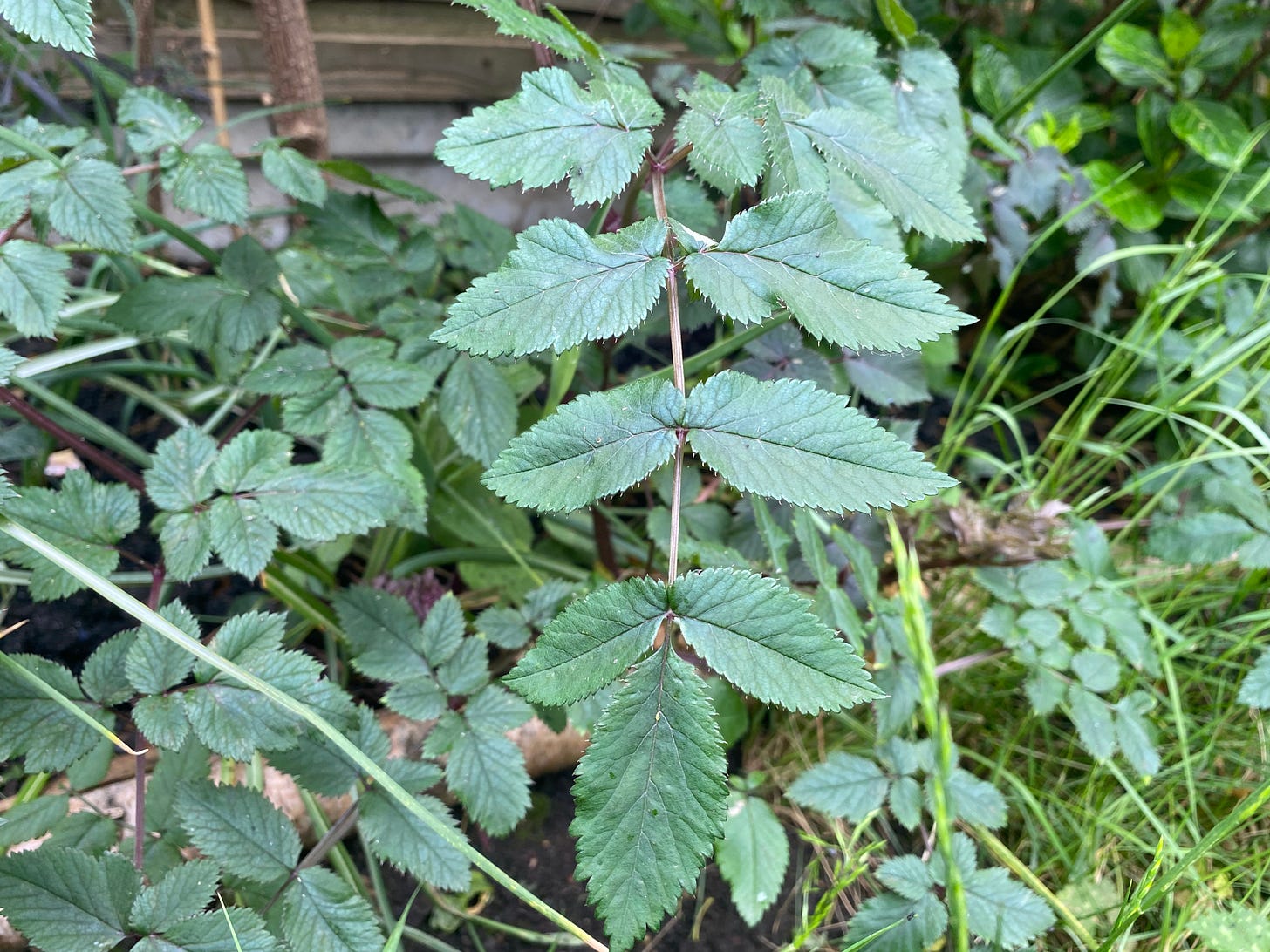
So without further ado, here’s a rundown of the different apps I tested, and how they fared.
Seek, by iNaturalist - free
Some of you may have already downloaded Seek on my prior recommendation. This citizen science app – a joint initiative of the California Academy of Sciences and the National Geographic Society – is probably the easiest to use of the on-test apps. The interface is uncluttered by ads or tabs or menus. You can choose from your saved photos, or use Seek’s augmented reality tech, whereby the app uses the camera as its eyeballs to ID a plant “live”, rather than from a still image.
I do really like this app, apart from the fact that the more I use it, the less helpful I’m finding it. The major issue is that Seek will only offer you an ID if it is completely confident in its answer. I admire the humility, but I would admire accuracy more.
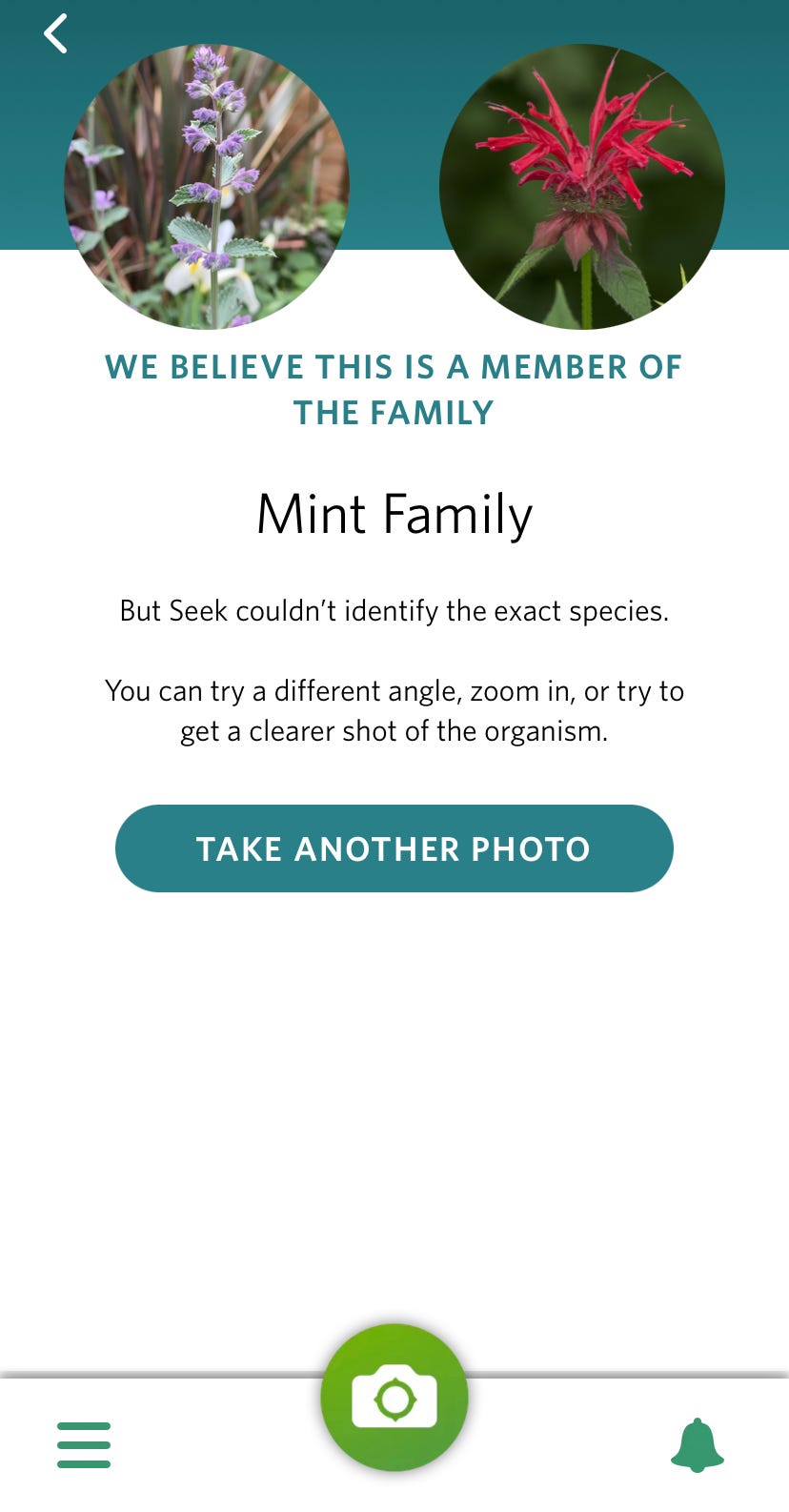
PlantSnap - 5 free snaps a day, or £1.67 per month for unlimited use
This was easily my least favourite app to use. Without upgrading to the paid service, I was only entitled to five free snaps in a 24-hour period – though I was presented with the generous offer of three extra searches in return for watching a video advert (which never actually materialised, despite multiple attempts). This was to become a theme.
There are ads plastered all over the app, and you have to sit through yet more of them before being presented with your ID results. Look, I get it, these apps take ages to create, and their makers deserve to be remunerated for their efforts. I don’t have a problem with the existence of ad-funded models, be it in print magazines, online videos or indeed apps. But there are limits to how many unskippable videos and flashing roulette wheels a person can sit through before losing patience. Especially when the entire experience seems designed simply to torture users into upgrading to a paid subscription.1
Which is a shame, because the accuracy of this app wasn’t too bad. For each attempted ID, it offered me five potential matches, and in each instance the correct answer was actually to be found among these. You could then read a bit more about the ID’d plants and, if you’ve paid, save them to your “collection”. Overall: decent accuracy, annoying experience.
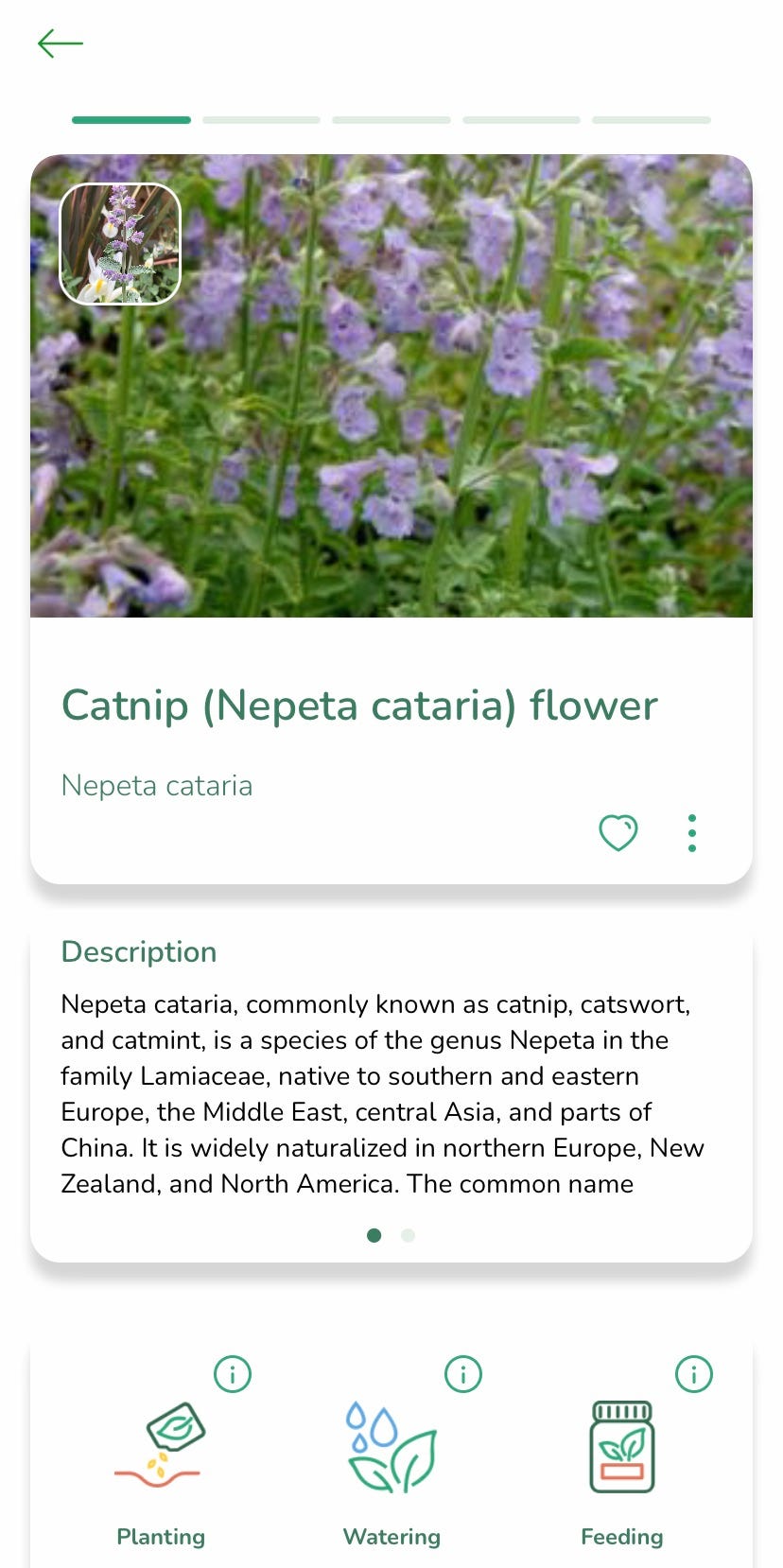
PlantNet - free
This is a citizen science app devised by the French Agricultural Research Centre for International Development, or CIRAD to their friends. Once you’ve taken or uploaded your photo, you are offered a list of potential matches, each of which comes with a percentage rating of how confident the app is in its own accuracy (which I like, because there’s nothing worse than an arrogant AI).
The app is entirely free, which is great, but not the most intuitive – there are lots of lists and menus and ambiguous icons. Also, after presenting you with your potential ID matches, it asks you to verify which one it is – fine if you know, because like me you’re taking photos of plants in your own garden, but possibly not so much if you genuinely have no idea what something is.
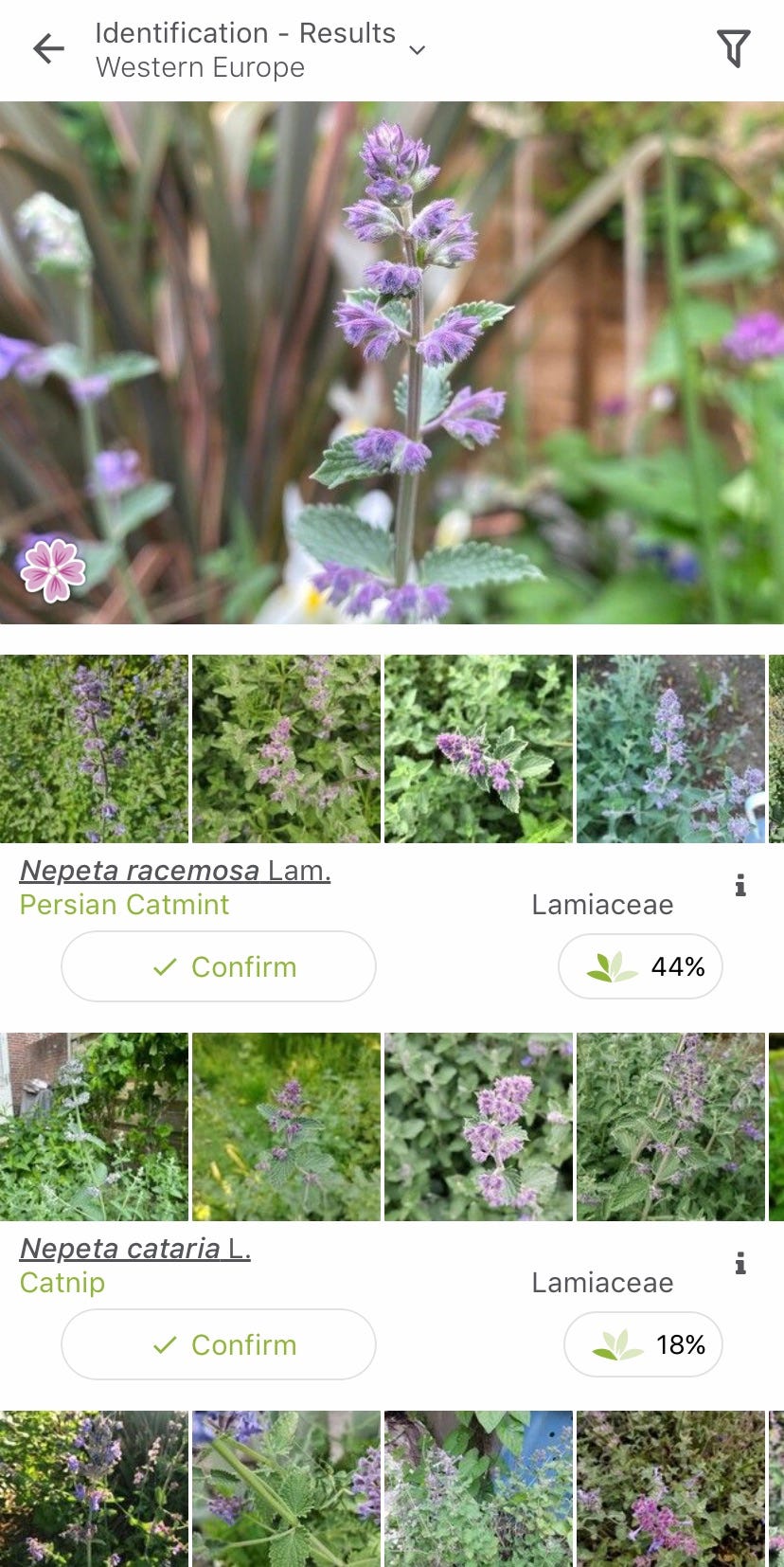
LeafSnap - free, or premium for £4.99/month or £22.99/year
LeafSnap has a very similar feel and functionality to PlantNet (above), but with a slightly slicker, pared back interface. With each ID attempt you are presented with a list of possible matches (though without the accuracy/confidence percentage), and the correct ID did usually appear towards the top of this list.
You do have to sit through an ad each time you try to use any of the app’s stated functions, which is fine, but more disappointingly the “read more” section under each result is basically just an in-app Google trawl that pulls up links to Wikipedia and the like, rather than giving you any unique or in-built information.
PictureThis - free, or £24.99/year for premium
PictureThis claims to identify 1,000,000+ plants every day with 98% accuracy, and in their words: “better than most human experts.” In my test, it was more like 50% accuracy, though it did come pretty close on the other 50%.
This app is very easy and intuitive to use and, as far as your average gardener is concerned, includes probably the most useful additional info on any ID’d plants – such as care information, characteristics, growing conditions and more – which you can then save to the ‘My Plants’ tab, even in the free version of the app.
There is a paid-for option too, but the app doesn’t constantly ram this down your throat, or force you to sit through endless ads, which is nice. The only downside is that PictureThis is very confident in its own abilities. Overly so. Some of the other apps hedge their bets and offer you a choice of potential plants; not so PictureThis. Which is fine when it’s right, but frustrating when it isn’t.
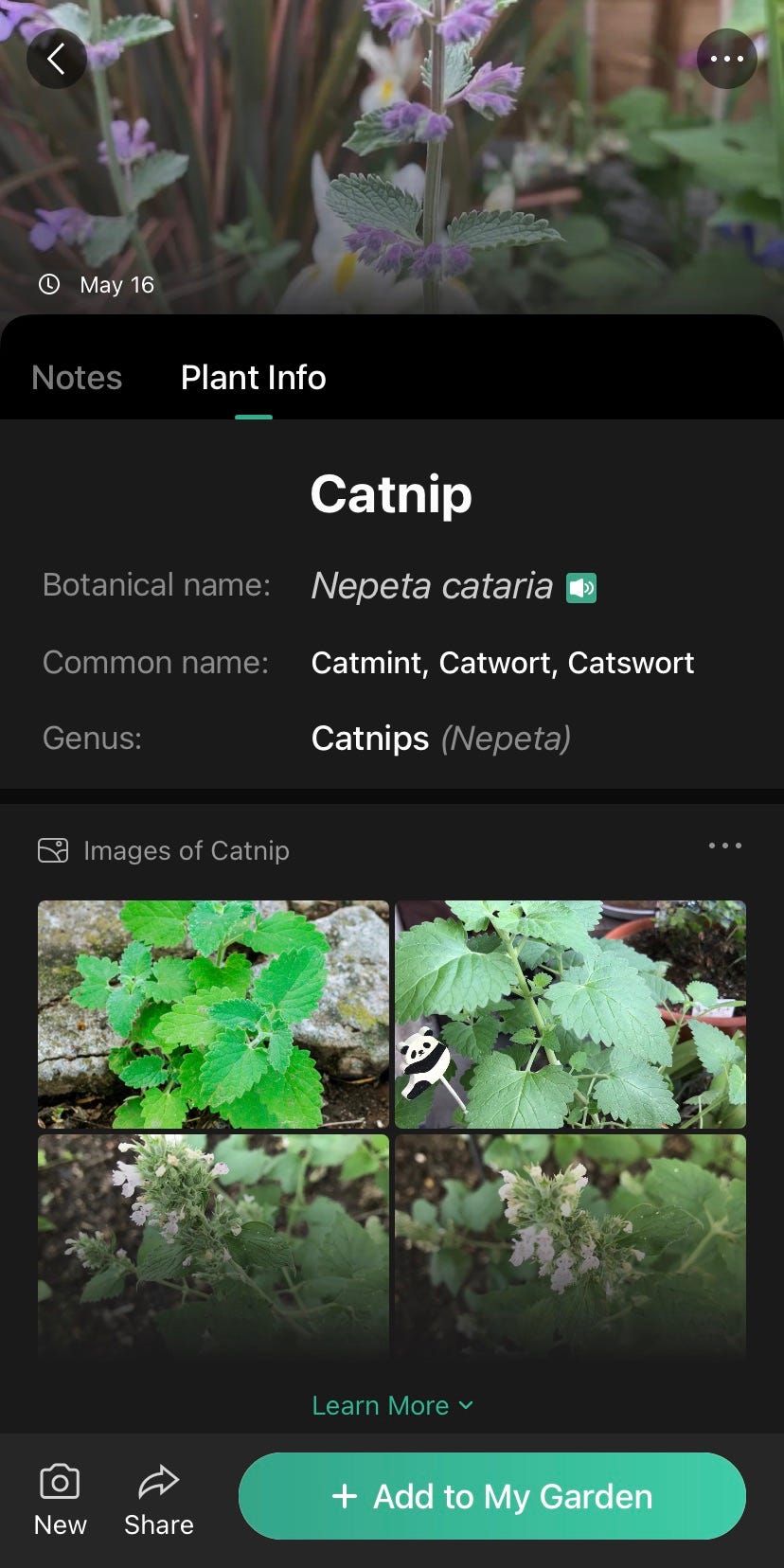
And the winner is…
Needless to say, I’m going to remove the ad-heavy apps from my phone the second I’m done writing this post.
The two citizen science ones I will keep. Both are worthwhile research projects, and their accuracy should improve as more users contribute to their databases. Seek is the more intuitive, PlantNet the more reliable. The latter edges it for me based on options provided – and therefore likelihood of accuracy – though it is annoyingly fiddly to use and even after a positive ID doesn’t give you much info about the plant in question.
On balance, then, the one I will probably turn to first, the majority of the time, will be PictureThis. The major downside for me remains its over-confidence and accompanying lack of total accuracy (it was close, but not close enough, on all four tested plants). When it was wrong, it was only a little bit wrong, but for us scientists (yes, we’re scientists now, didn’t you know?), there’s no scope for error.
I wish I could sit here and tell you without hesitation that one app was far and away better than the others. But I can’t. I’m sorry. There is still no perfect app which combines ease of use, affordability and accuracy.
Then again, it’s fairly miraculous that we have access to even the apps that we do. The technology has become so familiar that it’s easy to forget how mind-bendingly sci-fi it is, and it’s only going to improve as our machine masters gobble up more and more of our data.
It is sort of terrifying. But for now, fun!
Have you used any of the apps on test? If so, how have your experiences compared with mine? Or did I somehow manage to miss off an amazing all-rounder? Let me know!
If you think the torture-to-subscribe model works, let me know and I’ll think about how I can work it into future editions of The Earthworm.






I recently switched from the "classic" iNaturalist app to Seek, and like it a lot more. Seek seems to have trouble with plants that have only a couple of leaves, as well as situations where there's foliage from multiple plants in the photo. Understandable, I guess. I'll have to check out PictureThis.
Happy to see that my preferred Seek app did pretty well in this rumble! Seek also has a little tab at the bottom where it can give you likely local options if it can’t narrow down the plant to a species. I’ll give PictureThis a chance too!